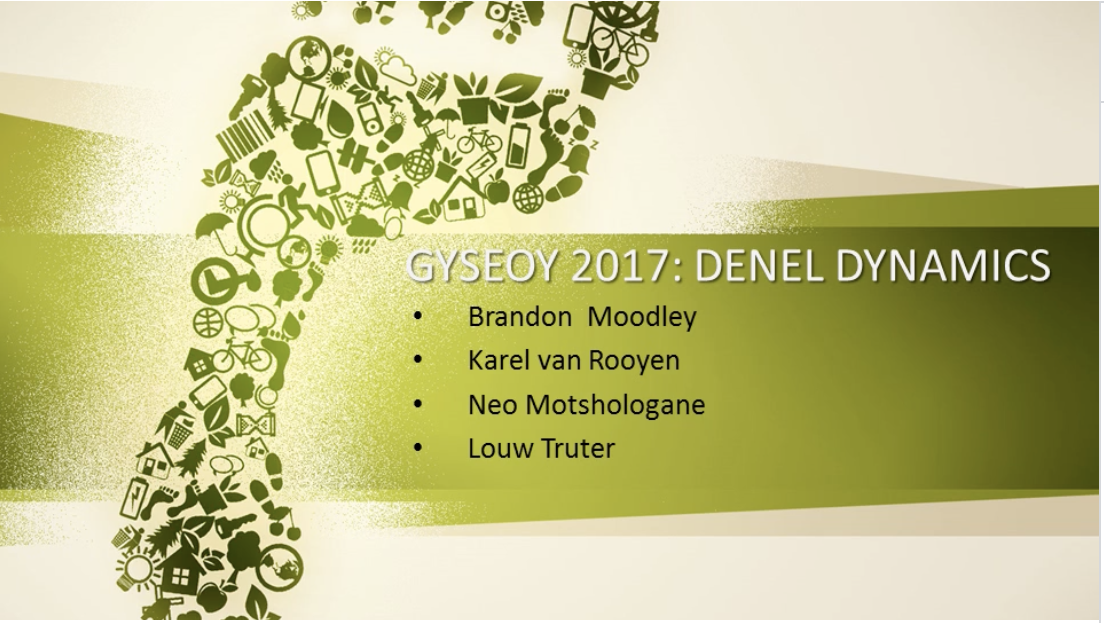
2019 GYSEOY Challenge | Ampie’s Endgame
Hansie Steyn, 37 year old, lived in Jamestown, one of the suburbs of Stellenbosch, and was the only son of Ampie Steyn and his wife Katryn. The three of them had lived in a small old house that belonged to the family with the mortgage bond paid off many years ago. It had two bedrooms, its structure was still fine, but the electric wiring was getting somewhat dodgy. Ampie had been a carpenter with his own business, but had found it dangerous to continue working at roof height and with sharp tools. Reluctantly he had retired a few years ago. Katryn died recently, leaving Ampie behind as widower. Ampie was 75 old and showed his age. He had recently sustained a nasty fall in the bathroom but fortunately none of his bones had been broken—just skin scratches and strained muscles. Hansie was an architect who often needed to be on a site visit for his clients and thus would not be able to look after his father on a full-time basis. Even his evenings were often consumed with work or socializing for marketing purposes. But Hansie was worried about his father’s future. In previous ages, the elderly had lived in a multi-generation family—typically three under one roof—where elderly care, and baby care, was a family responsibility. Culturally the veneration of elders had been replaced by the veneration of the independent self. With the Westernization of medicine in modern times, the care of the elderly had become much more scientific, and had been transformed from a social problem to a medical problem. According to the Health Professions, a person who could not without assistance perform the eight Activities of Daily Living: use the toilet, eat, dress, bathe, groom, get out of bed, get out of a chair, and walk, was classified as physically dependent. A person who could not without assistance perform the eight Independent Activities of Daily Living: shop for yourself, prepare your own food, maintain your housekeeping, do your laundry, manage your medications, make phone calls, travel on your own, and handle your finances, was classified as unable to live safely on his or her own.
.
Ampie was still strong, and was classified as able to live safely on his own. But for how long would that continue? And how long after that would independence become no longer possible? Both Ampie and Hansie did not consider an old age home as a viable option for Ampie. Ampie had friends who resided in such homes, but he had always been impressed how old age homes served many societal objectives—freeing up hospital beds, relieving families from the burden of caring for parents, and coping with poverty among the elderly. But those old age homes never satisfied the objectives of the elderly residents who lived in them—how to make life worth living when they were too frail to be physically independent. Old age homes were designed to control their residents in every detail. Efficiency demanded that the nursing staff have the residents ready for the catering staff, who after lunch in turn would have the residents ready to hand over to the activity coordination staff, who needed to keep them out of their rooms so that the cleaning staff could do their work. And then the medicine dispensing nurses started their rounds again. Residents were forced to relinquish their autonomy—the freedom to decide themselves when they want to do what. They were no longer the authors of their lives. In fact, old age homes were becoming quite similar to prisons! Research showed that as people become aware of the finitude of their life, they did not ask for much. They did not seek more riches. They did not seek more power. They asked only to be permitted, insofar as practical, to keep shaping the story of their life—to make choices and sustain connections to others according to their own priorities. But old age homes had evolved completely different priorities!
Team SKyJaazi
Members:
- Ziyaad Jassiem,
- Sydil Kupa,
- Jason Fynn,
- Kabo Mabusha
Please watch this space for announcements.
Please watch this space for downloads.
Hansie wondered what Ampie’s requirements would be for the life that was left to him. Ampie clearly wanted to live as independently for as long as possible, but who would take care of him once that was needed? Hansie had read about a great concept called “assisted care”, but the retirement home real estate agents had started to abuse that as a marketing buzzword so that it had lost its original meaning. Although Ampie was a member of a medical scheme that provided reasonable medical care, frail care was unfortunately classified as resulting from advanced age, and was thus handled as social care, not medical care. Assisted living was similarly viewed as social care, not medical care. Confusingly, medical schemes were obliged to pay for palliative or terminal care intended to improve quality of life when there was no prospect of prolonging life; although such care only focused on pain relief.
Bibliography
- Atul Gawande; Being Mortal—Illness, Medicine and What Matters in the End, Profile Books, 2014, 297 pp, (also available on Kindle). Robert McCrum; Every Third Thought—On Life, Death and the Endgame, Picador, 2017, 257 pp, (also available on Kindle).



